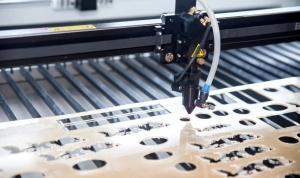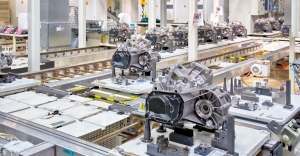please click here:
https://www.dragon-abrasives.com/sandblasting-media.html
Sandblasting, also known as abrasive blasting, is a versatile technique used to clean, etch, strip, or polish various surfaces. Its applications range from heavy industrial cleaning to delicate restoration projects. The effectiveness of sandblasting largely depends on the choice of blasting media. With numerous options available, understanding the characteristics, advantages, and ideal use cases of each type can help operators achieve the desired results efficiently and safely.
Understanding Sandblasting Media
Sandblasting media are materials propelled at high speeds to clean or prepare surfaces. These abrasives vary in hardness, shape, size, and environmental impact. Choosing the wrong media can damage surfaces, reduce efficiency, or increase operational costs. Key factors to consider when selecting sandblasting media include the substrate type, surface finish requirements, environmental considerations, and cost-effectiveness.
Types of Sandblasting Media
The market offers a variety of sandblasting media, each suited to specific applications. Below is a detailed overview:
Aluminum Oxide
-
Properties: Hard, sharp, and durable. Available in angular or irregular shapes.
-
Uses: Ideal for etching, polishing, deburring, and surface preparation.
-
Advantages: High recyclability and consistent performance. Produces precise finishes on metal, glass, and stone.
-
Considerations: Generates dust; PPE and ventilation are essential.
Steel Shot and Steel Grit
-
Properties: Steel shot is spherical, while steel grit is angular, providing aggressive cutting action.
-
Uses: Suitable for cleaning, surface preparation, and peening metal surfaces.
-
Advantages: Extremely durable and effective for heavy-duty applications like shipyards, pipelines, and automotive parts.
-
Considerations: Not suitable for delicate surfaces due to its high hardness.
Garnet
-
Properties: Hard, dense mineral; relatively sharp edges.
-
Uses: Effective for removing coatings, rust, and preparing surfaces for painting.
-
Advantages: Low dust generation, environmentally friendly, can be recycled multiple times.
-
Considerations: Slightly more expensive than silica sand, but safer and non-toxic.
Glass Beads
-
Properties: Smooth, spherical particles.
-
Uses: Ideal for polishing, surface peening, and deburring.
-
Advantages: Produces a smooth, matte finish without dimensional changes. Non-aggressive on the substrate.
-
Considerations: Less effective for heavy coating removal.
Plastic Media
-
Properties: Softer, irregular particles.
-
Uses: Used for paint removal, delicate cleaning, and de-burring non-metallic components.
-
Advantages: Gentle on substrates, reduces the risk of surface damage.
-
Considerations: Less abrasive; not suitable for heavy rust or scale removal.
Walnut Shells
-
Properties: Organic, fibrous, and slightly abrasive.
-
Uses: Cleaning and polishing soft metals, wood, or delicate surfaces.
-
Advantages: Biodegradable, non-toxic, and environmentally friendly.
-
Considerations: Not suitable for heavy-duty industrial applications.
Crushed Glass
-
Properties: Angular, sharp particles.
-
Uses: Effective for rust and coating removal, etching glass and metal surfaces.
-
Advantages: Made from recycled materials; cost-effective and eco-friendly.
-
Considerations: Can create dust; proper PPE is required.
Silicon Carbide
-
Properties: Extremely hard, angular abrasive.
-
Uses: Suitable for hard materials like ceramics, glass, and stone.
-
Advantages: Provides aggressive cutting action, long-lasting performance.
-
Considerations: Higher cost; can wear blasting equipment faster.
Baking Soda
-
Properties: Soft, non-toxic, water-soluble.
-
Uses: Ideal for delicate cleaning, graffiti removal, and cleaning sensitive equipment.
-
Advantages: Leaves no residue, safe for most surfaces.
-
Considerations: Minimal cutting power; mostly for gentle applications.
Factors to Consider When Choosing Sandblasting Media
Selecting the right sandblasting media involves careful analysis:
Surface Material
Hard surfaces like steel require tough abrasives such as aluminum oxide or steel grit, whereas soft surfaces like wood, plastics, or delicate metals benefit from walnut shells or plastic media.
Desired Finish
Different media produce distinct finishes:
-
Smooth Finish: Glass beads or plastic media.
-
Matte Finish: Aluminum oxide or garnet.
-
Aggressive Cutting: Steel grit, silicon carbide.
Environmental and Health Considerations
-
Avoid silica sand due to respiratory hazards.
-
Prefer biodegradable media like walnut shells or garnet for eco-conscious projects.
-
Dust control systems or wet blasting may be needed for dry media.
Cost and Availability
-
Media like aluminum oxide and steel shot are reusable and cost-effective for large-scale operations.
-
Organic and specialty media may be more expensive but are safer and environmentally friendly.
Media Comparison Table
| Media Type | Hardness (Mohs) | Shape | Recyclability | Dust Level | Best For |
|---|---|---|---|---|---|
| Aluminum Oxide | 9 | Angular | High | Medium | Etching, polishing, metal prep |
| Steel Shot | 6.5 | Spherical | High | Low | Metal cleaning, peening |
| Steel Grit | 6.5 | Angular | High | Medium | Surface prep, rust removal |
| Garnet | 7-8 | Angular | Moderate | Low | Cleaning, coating removal |
| Glass Beads | 5-6 | Spherical | Moderate | Low | Polishing, peening |
| Plastic Media | 3-4 | Irregular | Low | Low | Delicate cleaning |
| Walnut Shells | 3 | Irregular | Low | Low | Soft surfaces, polishing |
| Crushed Glass | 5-6 | Angular | Low | Medium | Rust removal, coating prep |
| Silicon Carbide | 9 | Angular | High | Medium | Hard surfaces, heavy-duty prep |
| Baking Soda | 2.5 | Irregular | Low | Very Low | Gentle cleaning, graffiti removal |
Applications of Sandblasting Media
Sandblasting media have broad applications across industries:
Automotive Industry
-
Use: Removing old paint, rust, or surface imperfections.
-
Media Choice: Aluminum oxide for precise etching; plastic media for paint stripping without substrate damage.
-
Example: Restoration of classic cars often uses glass beads for finishing chrome parts.
Aerospace Industry
-
Use: Cleaning delicate components like turbine blades or aerospace alloys.
-
Media Choice: Glass beads and baking soda for precision cleaning.
-
Benefit: Avoids altering the aerodynamic surface profiles.
Construction Industry
-
Use: Surface prep for steel beams, concrete, or masonry.
-
Media Choice: Steel grit and garnet for heavy-duty cleaning.
-
Benefit: Ensures proper adhesion for coatings and paints.
Marine Industry
-
Use: Removing barnacles, rust, and old coatings from ships.
-
Media Choice: Steel shot or aluminum oxide.
-
Benefit: Durable media handles large-scale metal surfaces efficiently.
Restoration Projects
-
Use: Cleaning historic buildings or monuments.
-
Media Choice: Walnut shells or baking soda for gentle cleaning.
-
Benefit: Protects delicate surfaces while removing dirt and graffiti.
Safety Considerations
Safety is critical when working with sandblasting media:
-
Personal Protective Equipment (PPE): Always wear respirators, gloves, and protective eyewear.
-
Ventilation: Ensure proper airflow to minimize inhalation of dust.
-
Noise Protection: Blasting generates high decibel levels; hearing protection is necessary.
-
Media Handling: Store media in dry, labeled containers; follow disposal regulations for non-recyclable materials.
-
Environmental Measures: Use wet blasting or dust extraction systems to reduce environmental impact.
Advanced Tips for Optimal Sandblasting
-
Adjust Pressure: Fine-tune the blasting pressure according to the media and surface material. Higher pressure for hard media on metal; lower pressure for delicate surfaces.
-
Nozzle Selection: Nozzle size affects coverage, speed, and finish quality. Larger nozzles for coarse media, smaller for fine polishing.
-
Media Blending: Sometimes blending media (e.g., glass beads with aluminum oxide) can optimize cleaning efficiency and surface finish.
-
Moisture Control: Keep media dry for consistent blasting. Wet blasting may be used for dust suppression or delicate applications.
-
Regular Maintenance: Inspect equipment for wear and tear, especially when using hard or angular abrasives like silicon carbide or steel grit.
Frequently Asked Questions
-
What is the best sandblasting media for removing rust?
-
Answer: Steel grit and aluminum oxide are effective due to their hardness and angular structure, allowing aggressive rust removal.
-
-
Can sandblasting media be reused?
-
Answer: Many media types such as steel shot and aluminum oxide can be recycled multiple times, which reduces operating costs and environmental impact.
-
-
Is sandblasting safe for all materials?
-
Answer: Not all surfaces can withstand abrasive blasting. Soft metals, plastics, or delicate components require gentle media like plastic beads or walnut shells.
-
-
How do I choose the right grit size?
-
Answer: Coarse grit is ideal for heavy coating removal; medium grit for surface prep; fine grit for polishing or finishing delicate surfaces.
-
-
Are there eco-friendly sandblasting media options?
-
Answer: Yes, garnet, crushed glass, and walnut shells are biodegradable and environmentally safe options.
-
-
Can sandblasting improve surface adhesion for coatings?
-
Answer: Yes, abrasive blasting creates a micro-roughness on surfaces, improving paint and coating adhesion significantly.
-
-
What safety precautions are critical in sandblasting?
-
Answer: PPE, proper ventilation, noise protection, and regular equipment checks are essential to prevent injuries and health hazards.
-
Article Summary
This comprehensive guide explores a wide range of sandblasting media, including aluminum oxide, steel shot, garnet, glass beads, and organic options. It details their properties, applications, and environmental impact, helping operators select the right abrasive for various industrial, automotive, aerospace, and restoration projects.






